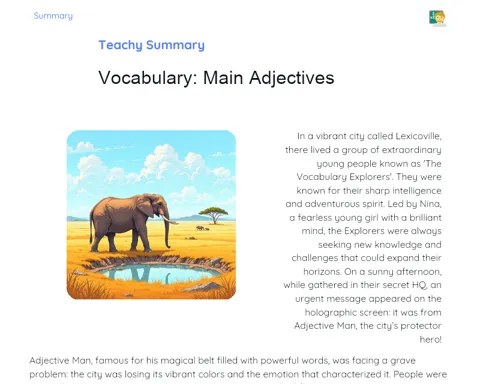INTRODUCTION
The Relevance of the Topic
- Global Communication: Learning colors in English is an essential building block for communication. It is one of the basic aspects of vocabulary that allows describing the world around us.
- Expression and Description: Colors are used daily to express feelings and describe objects, people, and places. Knowing them in English enhances the ability to express oneself clearly.
- Foundation for Fluency: Color vocabulary is one of the initial foundations for developing fluency in English. It introduces simple concepts that are essential for more complex conversations in the future.
Contextualization
- English in Elementary School: In the elementary school curriculum, English is introduced to open doors to the vast globalized world, where this language is often the means of communication.
- Interdisciplinarity: The topic of colors connects with other subjects such as arts and sciences, where the identification and use of colors are fundamental.
- Culture and Diversity: Exploring colors in English also provides a way to learn about different cultures and how they perceive and use colors in different contexts.
THEORETICAL DEVELOPMENT
Components
- Basics of Primary Colors:
- Red: Reminds of fruits like apples and strawberries.
- Blue: Associated with the sky and the ocean.
- Yellow: Refers to the sun and bananas.
- Secondary Colors - Mix of Primaries:
- Green: Results from the mixture of blue and yellow, present in leaves and grass.
- Orange: Combination of red and yellow, as in oranges and carrots.
- Purple: Arises from the mix of red and blue, seen in grapes and eggplants.
- Tertiary and Neutral Colors:
- Brown: Color of wood and chocolate.
- White: Color of snow and clouds.
- Black: Seen in the night and tires.
- Gray: Mixture of black and white, common in rocks and mice.
Key Terms
- Hue: The quality that defines a color. For example, sky blue is a hue of blue.
- Shade: A color mixed with black, like dark green.
- Tint: A color with white added, for example, light blue.
- Primary Colors: The basic colors that cannot be created by mixing other colors.
- Secondary Colors: Created by mixing two primary colors.
- Tertiary Colors: Result from the combination of a primary and a secondary color.
Examples and Cases
- Identifying Colors in Objects:
- An apple is generally red or green.
- The sky is generally described as blue.
- Creating New Colors:
- Mixing yellow and blue creates green - as in painting.
- Using Colors for Descriptions:
- Describing a banana as yellow and a carrot as orange to practice colors in English.
- Difference between Shades and Tints:
- An autumn leaf can be described as dark green if mixed with black, or light green if mixed with white.
- Colors in Culture and Festivals:
- Green on St. Patrick's Day represents Ireland.
DETAILED SUMMARY
Key Points
- Learning Primary Colors:
- We understand that red, blue, and yellow are the basis for creating other colors.
- Discovering Secondary Colors:
- We saw how to mix primary colors to make green, orange, and purple.
- Exploring Tertiary and Neutral Colors:
- We learned about brown, white, black, and gray, and where we can find them in nature and objects.
- Use of Special Terms:
- We discovered what hue, shade, and tint are, and how they change the perception of a color.
- Practice with Examples:
- We identified the colors of objects around us to reinforce learning.
Conclusions
- Colors are Key Elements in Communication:
- We found that knowing colors helps describe the world in a richer and more precise way.
- Colors Aid in Cultural Expression:
- We realized how colors are part of celebrations and cultural expressions worldwide.
- Colors in Interdisciplinary Learning:
- We understood the importance of colors in different areas, such as arts and sciences.
Exercises
- Identifying Colors:
- Draw and paint objects with the correct colors. For example, a banana (yellow), a leaf (green), and the sky (blue).
- Color Mixing:
- Use paints or colored pencils to mix two primary colors and create a secondary one. Present the result with the names in English.
- Describing Scenes:
- Write short sentences describing colors of different scenes, such as a sunset or a garden, using terms like shades and tints.



